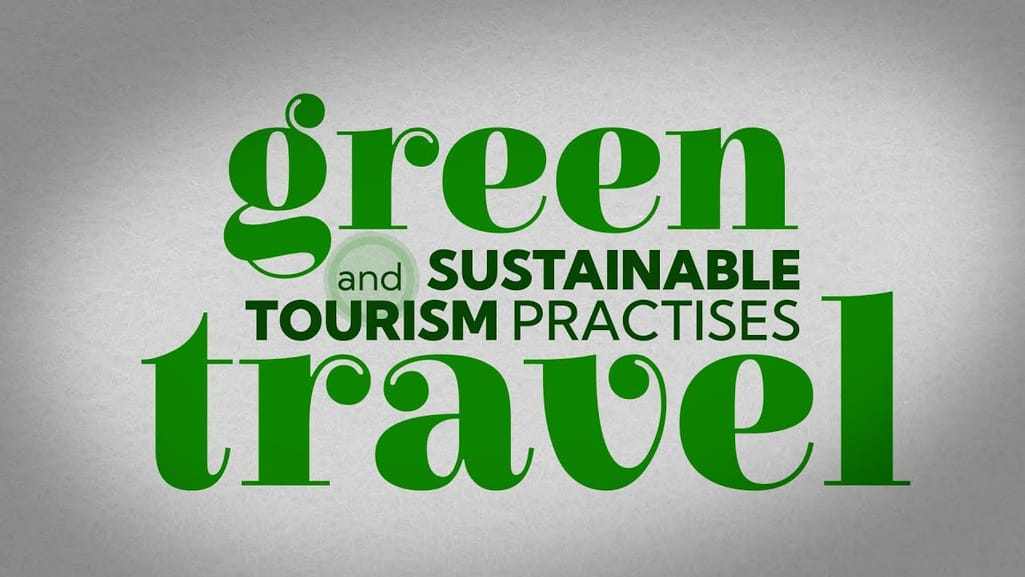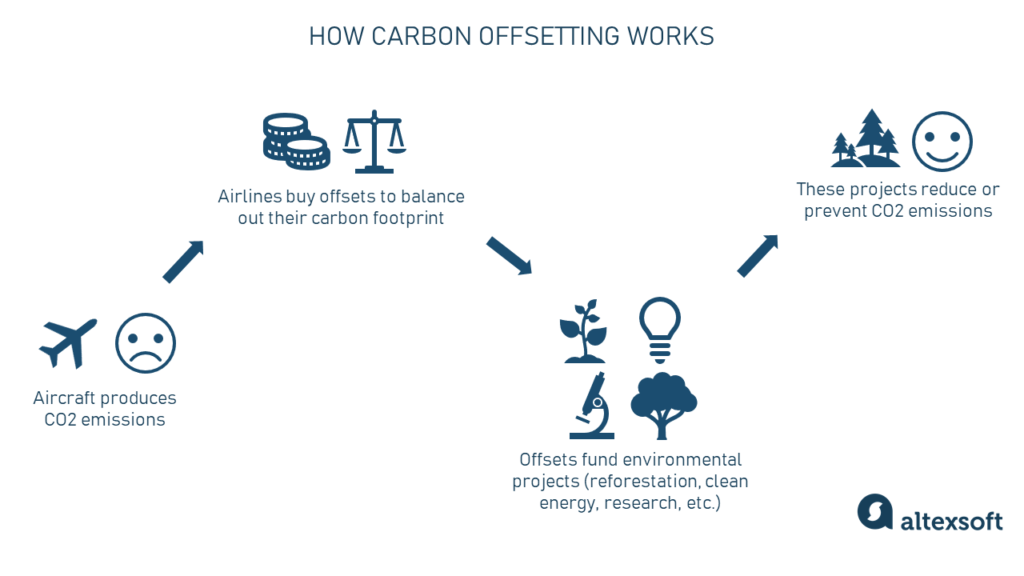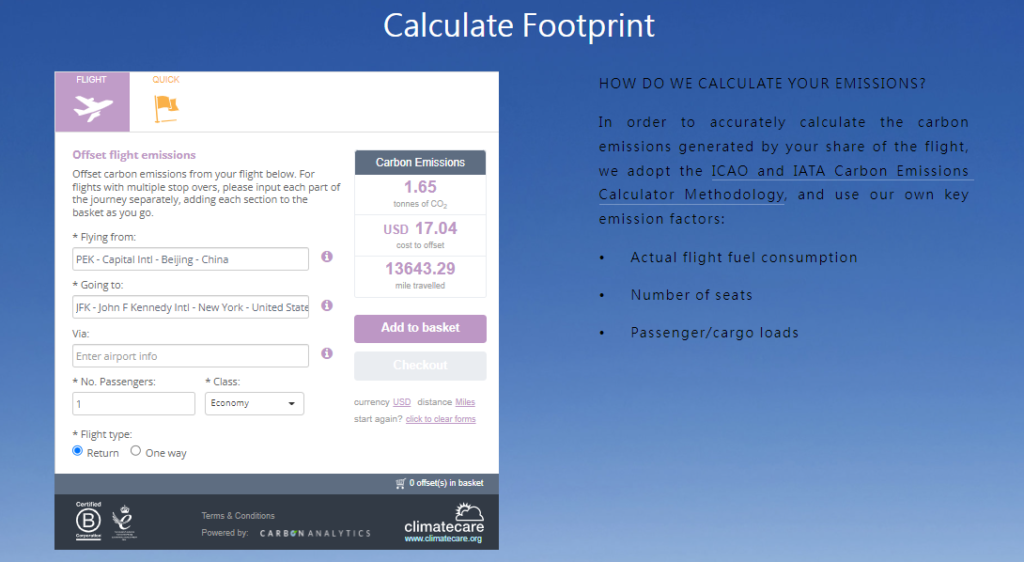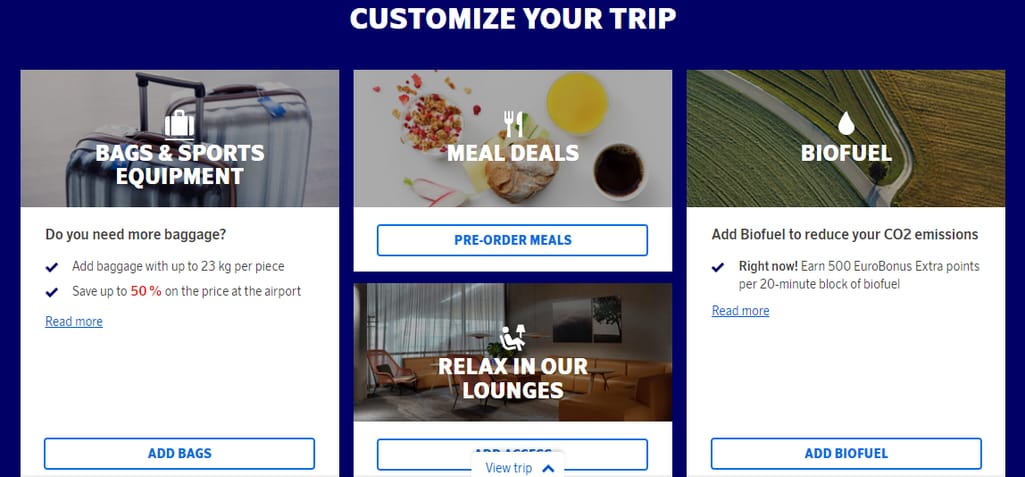Carbon offsets will not let us buy our way into heaven, but they could slow our descent into hell.
At this time of global environmental change awareness, people, countries, and businesses are acting to reduce their harmful impact. Aviation is one of the major sources of greenhouse gasses, so airlines must adopt effective strategies to decarbonize their operations.
IATA and its members committed to go net zero by 2050, which sounds great, but the problem is that the amount of air traffic is forecasted to be more than 3 times greater by that time. So, airlines face a tremendous challenge of reducing emissions and simultaneously accommodating the growing demand.
Together with gradual implementation of operational changes and transition to alternative fuels, carbon offset schemes have to be adopted as an immediate compensation for the harmful impact. In this article, we explore how airlines can approach carbon offsetting to achieve their sustainability goals.


How we see green travel
What is carbon offset?
A carbon offset is basically compensating your CO2 (or other greenhouse gas) emissions by funding an emission reduction elsewhere. This is possible because climate change isn’t localized. Because harmful greenhouse gasses mix and spread in the atmosphere, reducing them anywhere contributes to global environmental improvement.
How carbon offsets work
With the help of offset schemes, individuals and organizations can invest in diverse environmental projects that help combat climate change such as
- renewable energy research and production,
- reforestation and prevention of deforestation,
- direct carbon capture,
- destruction of industrial pollutants,
- methane capture and combustion,
- supporting and educating local communities, and much more.
If you manage to completely offset the pollution you cause by your operations, your company/activity can be called carbon neutral.
Carbon offsetting can be voluntary – when people or companies make their own decision to neutralize their carbon footprint, and/or be accomplished by compliance – when businesses buy offsets to comply with legal requirements and balance out their emissions. The aviation industry is now in the process of transition from voluntary to compliance offsetting.
So how does carbon offsetting actually work for airlines? It concerns two sets of activities: enterprise-level and customer-level.
- As a company (especially if committed to a net-zero goal), an airline calculates its carbon footprint and buys offsets from carbon market providers to compensate for it. Later on, we’ll look at the regulating standards and talk about offsetting programs.
- On the other hand, many airlines offer their customers (both individual and corporate travelers) an opportunity to make up for their flights. On their websites, they provide emission calculators, payment options, and information on the projects the money will be invested in.
Now that we’ve covered the basics, let’s look deeper into the regulating organizations and key legislative acts that supervise carbon offsetting in aviation.
Carbon offset regulations in aviation
Okay, so there were several main events that set concrete goals of decarbonizing the aviation industry and standardized related actions.
IATA commits to halve emissions by 2050
As the aviation industry players recognized their global environmental impact, they united in their pursuit of a more sustainable approach. So, in 2009, long before the well-known Paris Agreement, IATA committed to improving fuel efficiency by 1.5 percent per year until 2020, stabilizing aviation CO2 emissions at the 2020 level, and reducing them by 50 percent by 2050 compared to 2005 levels.
Several main ways of carbon footprint reduction were outlined. They include
- technological improvements (newer, more efficient engines);
- switching to alternative, less carbon-intensive fuels;
- operational measures (lightweight equipment, less idling); and
- infrastructure changes (optimizing routes, reducing time in flight).

Predicted fuel consumption and shift to sustainable fuels. Source: ICAO
CORSIA is adopted
However, it turned out that all these reduction measures aren’t enough. So, in 2016, the International Civil Aviation Organization (ICAO) adopted a resolution establishing a so-called Carbon Offsetting and Reduction Scheme for International Aviation (CORSIA). This scheme is the main global regulating mechanism for addressing aviation-related pollution. As of March 2022, 109 countries have announced their participation in CORSIA.
In short, CORSIA requires airlines to buy offsets to account for the increase of their carbon footprint. The point is that CORSIA offers a cost-effective solution for aviation since it’s cheaper to fund environmental projects in other economic sectors as they contain the potential for quicker emission reductions.
Note that CORSIA is only applied to civil flights. In addition to military operations, other exemptions from CORSIA include
- operations with airplanes with a Maximum Take Off Mass (MTOM) below or equal to 5,700 kg;
- humanitarian, medical, and firefighting operations; and
- operators whose total annual CO2 emissions from international aviation are below or equal to 10,000 tons.
The scheme wasn’t created as an alternative to new technologies or as the only means to reduce the harmful impact. Instead, it was designed to be a part of a suite of activities that deliver results immediately and stabilize emissions until new, more efficient technology and fuels can be developed and scaled up.
SARPs standardize CORSIA
In June 2018, the ICAO Council adopted the international Standards and Recommended Practices (SARPs) for CORSIA as the First Edition of Annex 16, Volume IV. All members of ICAO are expected to “implement the SARPs in their national regulations and ensure that domestic requirements are fully aligned with the SARPs”. Here’s what they contain.
Timeline. The CORSIA scope and detailed timeline were established and documented. In a nutshell, the scheme has to be implemented in a number of stages.
- A baseline period – aircraft operators monitor their emissions in 2019 to establish a baseline for next phases. Emissions data from 2019 and 2020 was supposed to serve as a reference, but because of the global COVID-19 flight crisis, only 2019 assessments are used.
- The pilot phase (2021-2023) and the first phase (2024-2026) – airlines voluntarily offset their emissions above the baseline. At this period, only flights between countries that volunteer to participate in these phases will be subject to offsetting requirements (it’s about 77 percent of international aviation activity).
- The second phase (2027-2035) – airlines mandatorily offset emissions from their international flights (with a few exceptions). That comprises more than 90 percent of the international aviation activity.
Emissions monitoring, reporting, and verification. The SARPs also regulate the emissions monitoring, reporting, and verification (MRV) activities. Thus, aircraft operators are required to develop and submit the Emissions Monitoring Plan to the national authority. After it’s reviewed and approved, airlines have to calculate their emissions either on the basis of the actual fuel use of each individual international flight (there are five approved monitoring methods), or with the help of the CORSIA CO2 Estimation and Reporting Tool (CERT).
CERT is a handy tool to calculate your emissions
Whichever calculation method is chosen, aircraft operators can claim emissions reductions from the use of alternative fuels that meet CORSIA sustainability criteria.
Annual emissions reports (look here for all the CORSIA standardized templates) will need to be verified by an independent third-party verification body (check the list of accredited organizations) before submitting to national authorities.
Offsetting requirements. The calculation of the airline’s offsetting requirements (or how much it has to compensate) is going to change throughout the CORSIA timeline. It will gradually shift from a “sectoral” (an aggregated industry value) approach to a combination of “sectoral” and “individual” (only considering the specific operator’s emissions) components. In any case, the airline will have to offset the amount of their emissions above the baseline.
Sectoral and individual components. Source: CORSIA Handbook
Purchasing carbon credits. Knowing their offsetting requirements, airlines will have to buy offsets at the end of every three-years phase to compensate for their CO2 emissions for that period. These offsets are referred to as “emissions units” or “carbon credits”. One emissions unit represents one tonne of CO2 emissions reduced.
These offsets can be bought on the carbon market from approved counterparts. The Emissions Unit Eligibility Criteria were adopted in March 2019 as guidelines for evaluation of offset programs and project types. Then, you have to “cancel” the purchased emission units (which will mean they are removed from circulation on the market) and submit an Emissions Units Cancellation Report.
The ICAO Council plans to review CORSIA every three years, assess its global environmental impact, and decide if any adjustments are necessary.
The ACT CORSIA provides training and informational materials you might need for its implementation. If you want to know more about CORSIA or have any questions, visit its FAQ page or check out the CORSIA Handbook. You can also consult the Environmental Technical Manual - Volume IV for implementation guidelines.
IATA commits to net zero
In October 2021, the resolution on going net zero by 2050 was approved and a base case scenario with five-year milestones was developed. The main point of the plan is to abate 65 percent of carbon emissions through the gradual transition to cost-competitive sustainable aviation fuels (SAF).
In addition, 13 percent is expected to be covered by new propulsion technology and other efficiency improvements should account for a further 3 percent. What’s left could be dealt with through carbon capture and storage (11 percent) and offsets (8 percent).
IATA expects governments to play an active role and support the aviation industry's sustainable goals. This includes incentivizing SAF manufacturers, engaging in carbon-reducing activities, and participating in CORSIA instead of imposing taxes that “would stifle investment and could limit flying to the wealthy.”
Carbon offset programs: how to find a reliable partner?
If you consider adding offset schemes to your sustainability strategy, you have to choose a trustworthy partner that will redirect your money to really effective projects. To help airlines with their search, in November 2021, the latest CORSIA Eligible Emissions Units document was released. It’s basically a list of offset providers approved by ICAO. Those include
- The Gold Standard,
- American Carbon Registry,
- Verified Carbon Standard,
- Clean Development Mechanism,
- Climate Action Reserve, and others.
Their websites contain complete information on the environmental projects that can be funded so that you can choose who you want to partner with and decide on your investments.
Besides, such major players as the Gold Standard or the Verified Carbon Standard serve as accreditation bodies that validate and certify other projects. So, you can partner with other carbon offset providers, just check if their projects are certified by the ICAO-approved organizations. There are lots of them out there, but some big ones airlines work with include
- ClimateCare,
- atmosfair,
- myclimate,
- Sustainable Travel International,
- Cool Effect,
- Pure Leapfrog, and many more.
Most of them have a wide range of projects focused on various aspects of emission reduction and climate care.
As we said, except for participating in CORSIA and offsetting their emissions to comply with requirements, many airlines give their passengers an opportunity to voluntarily join the initiative. So, let’s talk about what you can offer to your customers.
Carbon footprint calculator, extra option, or surcharge: how should your passengers offset flights?
National Geographic claims that 38 percent of US respondents were positive about buying carbon offsets (and among millennials the result was 48 percent). In addition, such donations are tax-deductible for a number of countries, which is an extra motivation for travelers to invest.
So, people are eager to make sustainable choices and you can help them compensate for their carbon footprint and spare them the need to look for a reliable offsetting program. There are three main strategies that you can implement.
Emission calculators
First, you can embed an independent offset calculator that helps measure flight CO2 emissions. Some verified offset vendors such as ClimateCare, Sustainable Travel, or myclimate provide their calculation tools that can be quite easily added to your website. You have to contact them directly to discuss the quote, customization, and other cooperation terms.
Such calculators come independent of the booking process so customers can basically offset any flight, even if they didn’t take it. Their interface is also very simple and user-friendly. However, the problem about them is that it takes motivation and a responsible attitude from a passenger to go looking for offsetting options.
Nevertheless, some of the biggest airlines chose this way and provided an independent calculator (in partnership with the major carbon offset providers). The links below redirect to the described calculation tools.
How do other airlines do it?
United works with Conservation International and invests in forest protection and local community support. They also created an Eco-Skies Alliance and collect donations to purchase additional SAF.
How United Airlines and Conservation International calculate emissions
Lufthansa partnered with myclimate to create a Compensaid platform which is also used by Swiss, Austrian, Brussels, and Eurowings airlines. Passengers can calculate their emissions and offset their flights with SAF or by contributing to climatic projects. In addition, some of these airlines have a separate calculator with a different partner.
China Airlines and Eva Air created their calculators in cooperation with ClimateCare. They consider not only the mileage but also the class of flight service and whether it’s a passenger or cargo load.
China Airlines emission calculator
British Airways chose Pure Leapfrog as their carbon offset partner. Their calculator also considers flight class and travelers can choose to invest in a range of projects and/or SAF.
Offsets embedded into the booking flow
As an alternative, you can embed carbon offsetting options right into your booking flow. In this case, passengers can opt in while buying tickets. This way, they’ll have a gentle reminder about how they can help the planet and reduce their emissions. Note, that if you want to modify your booking process, you’ll have to engage experienced IT specialists to design it properly.
Additionally, you might want to add an automatic footprint calculation so that your customers know exactly how much emissions are generated by their flight. Most offset providers have their own calculating tools, so talk to your partner to see if you can build an integration. If not, you can always connect to one of those we mentioned above.
How do other airlines do it?
SAS, a leading Scandinavian airline, encourages travelers to purchase biofuel that causes lower emissions. Passengers can choose to buy it when booking their tickets or at any time before the flight.
SAS customization options
Air France-KLM group calculates CO2 footprint of the flight and gives a choice of green initiatives. Passengers can select if they want to contribute and how as an extra option as they book their tickets.
Sustainable projects offered by Air France
Adding a fee to ticket prices
There’s yet another way. You can spare your passengers a hard decision, but just charge an extra fee on every flight. Simple, right? Besides, it doesn’t require any IT efforts. Be prepared, however, that not all of your customers will like it. So, consider creating an informative webpage with all your offsetting obligations and complete information on the projects you support.
How do other airlines do it?
Loganair, the biggest regional airline in the UK, adds an extra £1 charge on every customer flight. Funds raised are invested in a range of accredited projects all over the world that are focused on renewable power, preserving rainforests, and so on.
Just recently, in January 2022, Air France and KLM also announced their decision to add a surcharge of 1.5 to 12 euros (depending on the flight distance and cabin class) to compensate for the SAF usage.
Sustainable fuel contribution included in the Air France ticket price
Carbon offset criticism
Carbon offsetting is rife with controversy. It has been the subject of a lot of debates and has been frequently criticized. We’ll discuss the main arguments of its opponents.
Businesses buy carbon credits instead of investing in R&D
Offset schemes are blamed as being counterproductive since they divert the actual emission reduction achieved with more efficient technologies and fuels. They remind of those medieval Catholic indulgences that were bought to ease a guilty conscience while the misdeeds continued.
And what do offsetting proponents say to that? As we mentioned above, carbon offsetting isn’t meant to be the panacea and it’s only good if it’s an additional measure. Of course, emission reduction from actual sustainable practices and newer technologies is much more significant, so they have to be implemented regardless.
Airlines have to cut their emissions by adopting energy-efficient technologies and greener practices at scale. CORSIA is only one of the components of the aviation industry’s strategy to get carbon-neutral, so airlines shouldn’t forget about technological, operational, and infrastructural aspects.
Besides, the main industry regulators have already agreed on capping the level of emissions. So airlines will have to cut their emissions in any way possible if they want to comply.
You never know if emission reduction actually happens and if it’s permanent
Say, you invest in reforestation. How can you be sure that these trees are planted or aren’t cut down in a few years? Or the opposite, supporting a forest protection project doesn’t guarantee that these trees wouldn’t have been cut regardless of your actions. Besides, potential emission reductions can be pretty hard to measure.
The solution to that is carefully choosing the partners and projects you want to support. If you're in doubt about planting trees, you can invest in some clean-energy initiatives. Consider funding methane gas capturing or distributing energy-efficient stoves/light bulbs to underdeveloped communities (at least the social benefit here is obvious).
As some say, “Reduce what you can and offset what you can’t.” Carbon offsets are controversial indeed and can’t be seen as a silver bullet, but they’re good for a start and definitely better than doing nothing.

Maria is a curious researcher, passionate about discovering how technologies change the world. She started her career in logistics but has dedicated the last five years to exploring travel tech, large travel businesses, and product management best practices.
Want to write an article for our blog? Read our requirements and guidelines to become a contributor.

